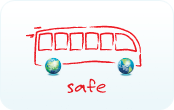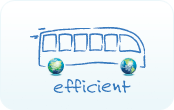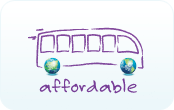 |  |  |  |  |
|





|
Smart Move best practiceMetropolitan areas and business centres need fast and efficient collective transport to meet auto-mobility needs. BRT can transport passengers at the same speed per hour as an express tram or light rail system. The only differences are that a BRT project can be completed much faster, that it’s a much less expensive project and that it can put into operation with much greater flexibility.
BRT is a modular and flexible concept that can be custom-designed for each city. Municipalities need only set up several major routes for subsequent feeder lines (for standard buses) as well “park-and-ride” systems for commuters. Lanes and routes can be adapted and extended relatively easily to, for example, residential areas and SME districts. Furthermore, articulated and bi-articulated buses are much more flexible than a vehicle on rails. Just like any other bus, BRT vehicles are perfectly capable of leaving their own lane to rejoin traffic.
The major benefits of the BRT system:
Find more best practices in Doubling the use of collective passenger transport by bus and coach – practical solutions
Find more about the Bus Rapid Transit concept
Please send your examples of business innovations and best policy initiatives to the IRU Secretariat (remi.lebeda@iru.org) which will be considered for the second edition of the study to be published in the second semester of 2010.
|

